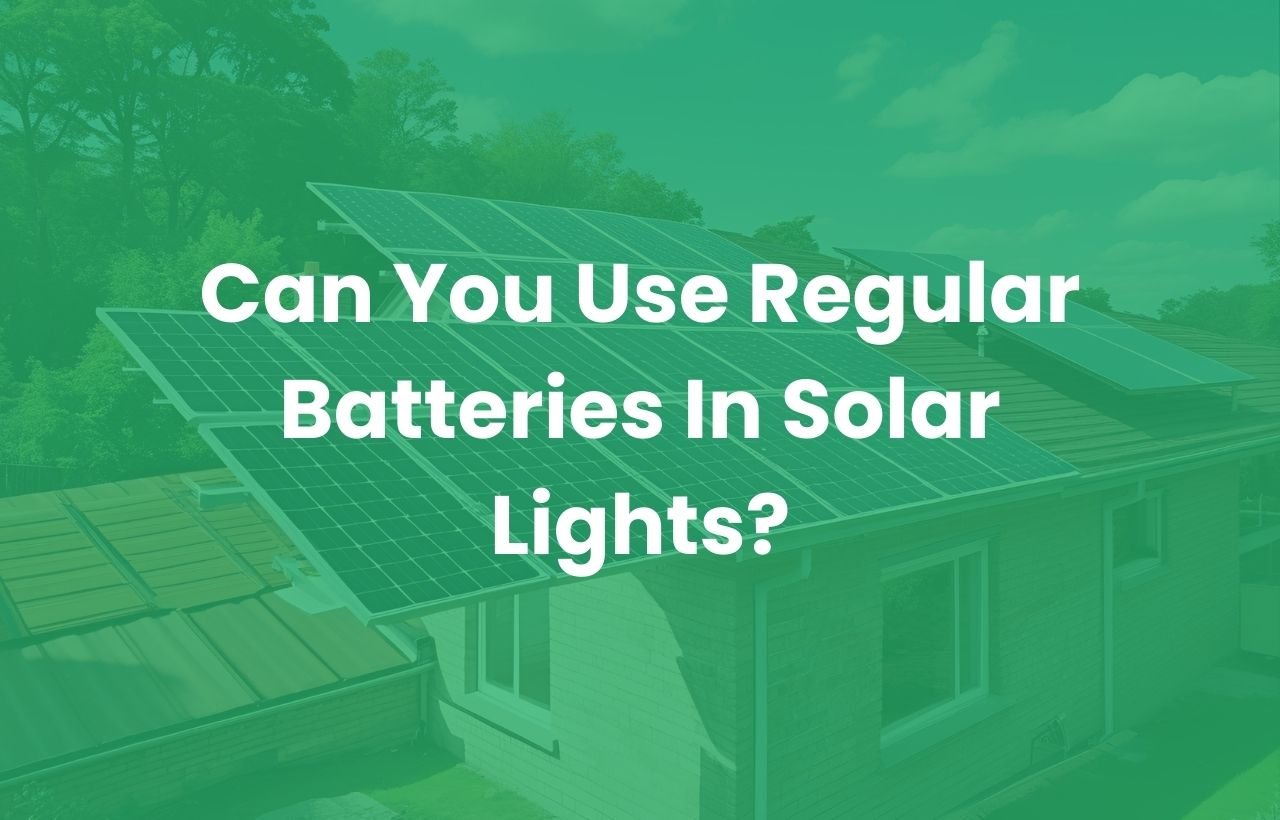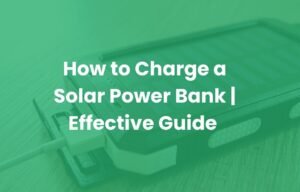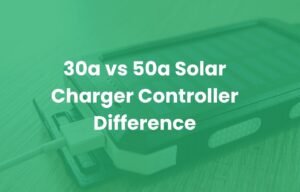Have you ever thought about “can you use regular batteries in solar lights”? It can be tempting to use standard AA batteries in solar lights, as we all know.
Your battery may suffer severe damage as a result, and it won’t last more than a day. Have you already done this? Do not worry! For instructions on how to inspect for damage and maybe save your light, scroll to the end.
In this article, we will discuss the details of “Can you use regular batteries in solar lights?”, 3 risk factors that you can’t ignore, some safe alternatives, and how you can test the solar light charger by yourself.
Table of Contents
ToggleThe Short Answer and the Important “Why”
The simple response is a strong no, but what really counts is the “why” behind it. It becomes clear why this frequent error causes such expensive damage when one considers the basic incompatibility between the structures of regular batteries and those of solar lights.
Let’s go over the actual dangers you should be aware of and clear your misunderstanding
Can You Use Regular Batteries in Solar Lights? No, Here’s Why (In Detail)
You cannot use regular batteries because they cause serious damage to the lights. Regular alkaline batteries aren’t made for this use.
For solar lights, rechargeable batteries are required because regular batteries are not. You may encounter issues with flickering lights or unexpected power outages if you have done this.
In simple words, it is like filling a diesel engine with gasoline. It is not intended for the system and will result in severe harm.
The 3 Risks That You Can’t Ignore
- Corrosive Leaks: The Permanent Killer
The regular alkaline batteries cannot be recharged. The attempt by a solar light to recharge them results in a destructive chemical reaction within the battery. Heat and gas are produced as a result, increasing the pressure until the battery’s seals break down.
The Result:
A white, caustic material called potassium hydroxide is forced to leak out by this pressure. This substance is extremely caustic and will rapidly:
- Eat away at your light’s weak metal battery contacts.
- Spread to the circuit board and wiring, resulting in irreversible long-term harm.
- The entire light system malfunctions, needing a complete replacement rather than a simple battery change.
- No Charging: A Single Night of Light
With the LED being powered by the sun during the day and discharged at night, solar lights are made to run on a 24-hour cycle. This cycle requires a rechargeable battery.
The Result:
Just like a flashlight or toy, the light runs on a regular battery for one night. But the solar panel is unable to recharge it when the sun rises the following day.
Since a solar-powered light will remain dead, this defeats its purpose. Your short-term solution will leave you disappointed in the long run.
- Voided Warranty: You’re on Your Own
The majority of solar lamp manufacturers make it clear in their warranty conditions that harm resulting from using the wrong kind of battery is not covered.
The Result:
Your warranty claim will be rejected if the manufacturer discovers clear evidence of alkaline battery corrosion after your lamp stops working.
It also means that, due to a basic, preventable error, you are the only one who must pay for replacing a light that could have lasted for years.
What if I Only Use Them Temporarily? (Addressing the Nuance)
A lot of people wonder, “Can you use regular batteries in solar lights?”. Just for a night or two until they get rechargeable ones. It’s still a no-no, and you shouldn’t take the chance. Here are the reasons:
- The Process Starts Immediately:
The solar light is unaware that it is a standard battery. The harmful chemical process starts as soon as sunlight strikes the panel, which then tries to recharge it.
- Risk Outweighs Reward:
Even if you might receive one night of dim light, you risk the danger of damaging the light’s internal components in a way that will be expensive and permanent. The risk of destroying the entire unit outweighs the few hours of light.
- It’s Easy to Forget:
When the situation is temporary, it’s very easy to forget that the standard batteries are inside. Often, a single bright day of charging is sufficient to result in leaks or overheating.
The Only Safe Alternatives
It’s now clear how dangerous utilising the wrong batteries may be. The right rechargeable alternatives are easy to choose, and doing so will ensure that your solar lights continue to operate securely and efficiently for a long period.
Use Rechargeable Batteries:
Rechargeable batteries are specifically compatible with solar lights. You should use the two primary types, which are:
1. Nickel-Metal Hydride:
This is the current option that is advised. They are generally accessible, have no “memory effect,” and hold a charge well. For the majority of solar lights, they are the greatest all-around choice.
2. Nickel-cadmium, or NiCd:
This is an older kind. They contain hazardous cadmium and can occasionally have a “memory effect” if not completely discharged, but they are still useful and can withstand many charge cycles.
Recommended Brands:
To guarantee consistency and quality, pick reputable brands like:
- Panasonic Enloops: the ability to store electricity even when not in use, and a long lifespan
- EBL: Budget-friendly and high-quality rechargeable batteries
- Amazon Basics Rechargeable: a dependable and affordable choice that is ideal for frequent use of solar lights.
Pro Tip:
While shopping, always look for the terms “pre-charged” or “ready-to-use”. You may use them in solar lights without charging because they are already charged.
How to Test Your Solar Light’s Charger (Simple Multimeter Test)
The best method for showing yourself why ordinary batteries are incompatible with solar lights is to perform this easy test. It provides a visual representation of the solar panel’s active efforts to charge the battery unit.
Why This Test is Useful:
If you are ever unsure if your solar light is broken or just needs new batteries, this test looks at the most important part—the solar panel itself. It ensures that your light’s “engine” is still operating.
Steps:
- Set a multimeter to DC Volts (20V range)
- A multimeter is a low-cost instrument that can be purchased at any hardware shop.
- A “V” with a straight line (V⋓) next to it displays the DC Volts setting. For this test, the 20V range is ideal.
- Touch the probes to the empty battery contact (+ and -)
- Make sure there are no batteries within the solar light.
- Touch the black probe against the negative (-) contact and the red probe against the positive (+) contact spring.
- Point the solar light at the sun or a bright light
- To turn on the solar panel, you need a bright light source.
- If you are testing indoors, a bright indoor lamp will work well.
- Read the Multimeter
- The voltage reading should be larger than 1.5V, for instance, between 1.8V and 2.5V.In such a situation, this is perfect since it shows that your solar panel is trying to both generate electricity and charge the batteries. Regular batteries would be damaged for this reason.
- The light itself is broken and needs to be changed if the reading is zero or extremely low (below 1V), which means the solar panel or internal circuit is probably malfunctioning and not producing electricity.
Have you already used regular batteries? Here’s what to do:
- Look for damage: Remove the batteries. Check inside for anything moist, whitish, or crusty. This indicates that your battery is leaking and may not work properly.
- Clean Carefully: To clean it safely, carefully scrape off any crusty stuff with a cotton bud dipped in vinegar. Vinegar helps prevent the harm. Wipe it dry with a cloth.
- Test with good batteries: After cleaning, put in rechargeable batteries. See if the light turns on. If it does, you fixed it! If not, the light might be broken for good.
Conclusion:
So, can you use regular batteries in solar lights? The simple and clear answer is “NO”. Because this can increase the risk of leakage and corrosion, leaving your lights damaged permanently.
That’s why it is important to select a compatible rechargeable battery for your solar power. This will ensure efficiency, safety, and longevity. Use this simple rule from today and make your house shine brightly for many years to come.





